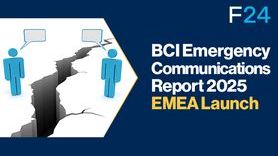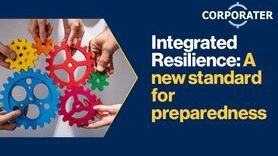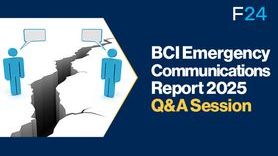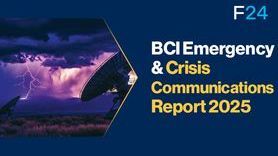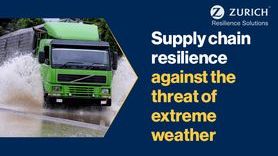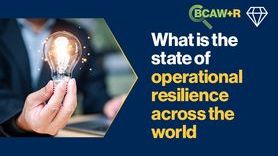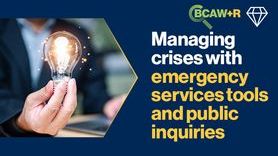UAE - exploring the impacts of severe weather
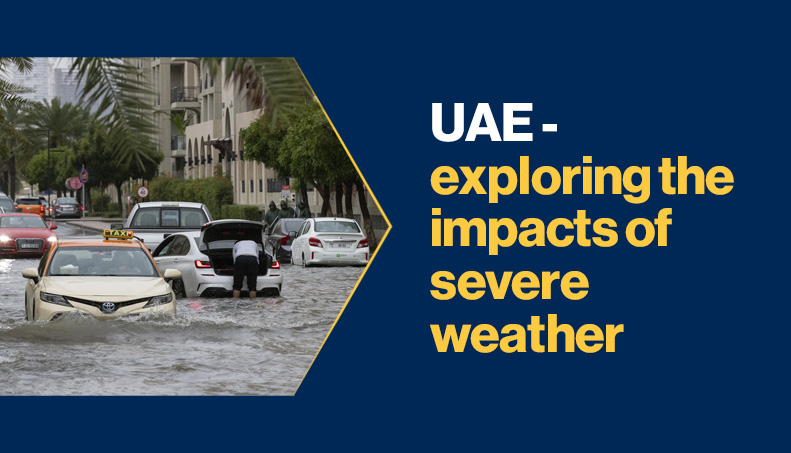
Last Tuesday, the United Arab Emirates (UAE) reported its heaviest rainfall in recorded history, experiencing more than an average year’s rainfall in a 24-hour period and strong winds of up to 70mph.
As a result of this extreme weather, much of the critical infrastructure of the country (including roads and runways) have been pictured underwater during the past week. The rainfall has exposed some of the vulnerabilities of the built environment in a climate which is usually known for being both hot and dry.
Transport disruption for those flying through Dubai International Airport – the second busiest in the world[1] – remained severe for days after the initial flooding. Of course, this not only disrupts those visiting or departing the country, but also those with onward journeys to other locations. Between Tuesday and Thursday, more than 1000 flights were cancelled[2] with operations starting to resume towards the end of the week.
The National Center of Meteorology issued a red weather alert and, in addition to the core response, government employees were advised to work from home in the immediate aftermath of the floods while the guidance for private organizations showed the same. Some schools were also closed during the flooding[3].
The extensive clean up and recovery operations delivered by the authorities and local communities began following the aftermath of the storms, with this including removal of debris and necessary repairs. In Sharjah alone, the city municipality had deployed 670 water tanker trucks and pumps by Wednesday to drain the rainwater from where it had collected[4].
“Emergency response teams — including civil defense, ambulances, and police — will continue ‘intensive efforts’ to ensure full recovery,” said the government as part of a statement[5].
In Dubai, a selection of the emirate’s property developers are offering free maintenance for damaged properties, alternative housing, cleaning services, as well as assistance in assessing any ongoing risks to housing. In addition, a leading electronics organization is reportedly offering free repairs and maintenance for any electronic goods damaged in the floods. The Crown Prince of Dubai, Sheikh Hamdan, has also instructed the development of a committee to review requests from citizens[6]. Of course, this range of support schemes, based upon a collaboration between the public and private sectors of the emirate, will likely speed up the recovery process of those based in Dubai.
Building resilience for the future
Beyond exploring the impacts of the flooding, it is critical to understand why the sudden and extreme downpour took place, and how the region can prepare for events such as this.
Experts say that the storms are likely to be a result of the ongoing impacts of climate change, and research shows that on a long-term basis severe downpours such as this are likely to increase in the region if global warming continues to worsen in the coming years[7].
With the above in mind, it is necessary to continually improve preparedness for extreme weather events in historically dry places to minimise the risk of disruption for citizens and organizations. This could mean assessing systems such as drainage systems to try to mitigate flood levels such as those seen over the last few days.
Indeed, it does appear that this process has already begun. Hassan Al Mansoori, the Undersecretary for Infrastructure and Transport Affairs at the Ministry of Energy and Infrastructure (MoEI), shared how the ministry has deployed a team to assess the damage to existing infrastructure while also conducting a study on how dams and waterways can be expanded to better withstand extreme weather in the future, along with other measures to improve resiliency (such as maintaining water pumps along the roadside)[8]. This quick change from response to recovery is a significant factor when preparing for future events.
The UAE also began a National Early Warning System project in 2017 to disseminate alerts in advance of a severe event in order to preserve lives and damage to property[9]. Warnings such as this are essential so organizations and residents can use the time before a severe weather event to make their environment as safe as possible before the worst impacts strike.
BCI board member Kelly Blakeley MBCI, based in the UAE, shared that: “With the challenging events of this week, we are all grateful for the responders and community workers that have demonstrated support and resilience in the response and recovery.
The impact of the storms underlines the importance for all organizations in fostering a culture of resilience in-house and with their communities of people. Organizational leaders should continue to invest in their readiness, following recognized good practice and evolving their resilience and crisis preparedness.”
Citations
[1]https://aci.aero/2024/04/14/top-10-busiest-airports-in-the-world-shift-with-the-rise-of-international-air-travel-demand/
[2]https://www.ft.com/content/01298bac-c915-432f-af7d-34223335461c
[3]https://www.bbc.co.uk/news/world-middle-east-68844405
[4]https://gulfnews.com/photos/news/photos-uae-rain-recovery-efforts-in-full-swing-1.1713428442538?slide=5
[5]https://www.khaleejtimes.com/uae/weather/uae-announces-end-of-unstable-weather
[6]https://www.khaleejtimes.com/uae/dubai-from-home-repairs-and-cleaning-to-pest-control-residents-in-flood-hit-areas-given-free-servi
[7]https://www.nytimes.com/2024/04/18/climate/dubai-floods-what-we-know.html
[8]https://www.financialexpress.com/world-news/calm-after-storm-dubai-infrastructure-gets-back-to-normal-key-details-inside/3464968/
[9]https://www.ncema.gov.ae/en/initiatives/early-warning-system.aspx#page=1





